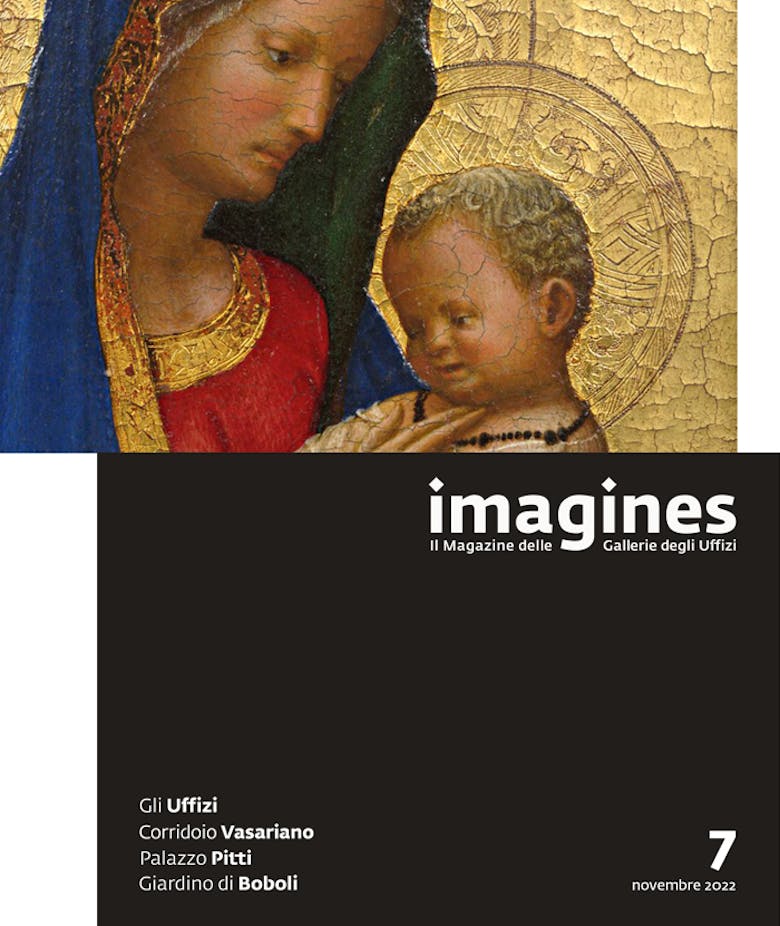Intro
Valdo Spini
In August 1944, the Allies moved on towards Florence. The Arno River split the city into two: southwards, the Allies and the CLN (National Liberation Committee) freed the Oltrarno neighbourhood; northwards were the fleeing Germans. On the night between 3 and 4 August, the Nazis blew up all the bridges over the river, sparing only the Ponte Vecchio and the Vasari Corridor, which thus became strategic to ensure the clandestine passage of men and information between the two banks of the river. Realized under commission from Cosimo I as a stunning link between Palazzo Vecchio, seat of the government, and the private abode of Pitti Palace, the Vasari Corridor, in the 20th century, was the protagonist of one of the most fascinating pages of the struggle against the Nazi-Fascist occupation, and is about to go through a new important season in the light of its forthcoming reopening to the public.
'Tabuletta nostre domine' by Antonio Casini
Angela Dillon Bussi
Article in italian | The recent exhibition dedicated to ‘The Tickling Madonna’ by Masaccio, also known as ‘Madonna Casini’, held in Siena in 2021, turned attention to a painting that disappeared for centuries and re-emerged thanks to Rodolfo Siviero in Florence in 1947. It was likely commissioned by Antonio Casini (1378-1439), Cardinal of San Marcello. The back of the panel bears the cardinal’s coat of arms surmounted by his cardinal's hat, providing a feature for post quem dating as this title was conferred to him in 1426. The painting has long remained unknown. It can be identified in a registry from the archives of the Opera del Duomo in Florence, dated June 19th, 1441, in which there is a ‘tabuletta nostre domine, olim cardinalis sancti Marcelli’. The news of its discovery, which briefly appeared in 1997 though escaped the attention of critics, is reproduced and expanded upon here to aid interpretation of the registry, since advanced upon, and clarify its meaning. It is assumed that after Casini’s death the panel was moved to the Opera del Duomo, partly as inheritance and part purchased.
Wenceslaus Wehrlin, portrait artist in the Italian courts of the second half of the 18th century
Fabio Sottili
Article in italian | This article traces the artistic career of the Turin-born painter, Wenceslaus Wehrlin (1745-1780). His paintings, characterised by their small format and private nature, were refined conversation pieces, genre paintings or portraits within domestic settings, with a neo-Flemish style beloved during the transition period from elegant rocaille to late 18th century classicism. While largely known until now for two paintings created for Grand Duke Peter Leopold, Wehrlin also played a key role in the court of Savoy, and a substantial number of works by this artist have now emerged, reflecting the Enlightenment and antiquarian culture spreading among Italian scholars and aristocrats in the second half of the 18th century.
Corrado Ricci and the origins of the Uffizi Department of Prints and Drawings’ 'Icon Collection'
Carla Basagni
Article in italian | The 'Icon Collection' housed in the Uffizi Department of Prints and Drawings is a fascinating archive composed exclusively of portraits provided with their own inventories. The origin of the Collection can be traced back to the work of Corrado Ricci during his time in Florence as director of the city's museums (1903-1906). Upon arriving at the Uffizi, Ricci did not limit himself to reproducing the same miscellaneous ‘photography shelter' as seen in the Pinacoteca di Brera, from which he had come. Instead he intended to highlight the museum's uniqueness by curating a collection of portraits of personalities, photographs and engravings, that would complete the Giovio Series of illustrious men, the first collection of paintings to be exhibited along the corridors of the Florentine Gallery by Grand Duke Cosimo I dei Medici.
The Origins of the Restoration Department. The Vasari complex, from the Uffizi Gallery, State Archives, National Library, Kunsthistorisches Institut and Restoration Department
Maria Vittoria Thau
Article in italian | Renowned for its valuable artwork restorations carried out under the direction of Ugo Procacci, the origins of the Restoration Department of the Superintendency for Medieval and Modern Art in Tuscany have, until today, remained largely unknown. This study has made it possible to accurately reconstruct it in terms of time, methods and, more importantly, key persons involved. What has emerged is a much broader picture than imagined, represented by the institutions and, even more so, the directors involved, shedding light on the early 1930s in relation to conservation and restoration and, even more so, on the close link between the Restoration Department - a forerunner of similar enterprises - and the Vasari complex in which it was located, destined to become the museum of museums, modelled on the Louvre according to Corrado Ricci's plan.
Una mostra per riaprire la Galleria degli Uffizi nel secondo dopoguerra
Elena Romanelli
Article in italian | This study reconstructs the history of the Uffizi Gallery between 1944 and 1947 by organising an art exhibition featuring its most prestigious masterpieces due to be held at the Musée d'Art et d'Histoire in Geneva. The aim of this initiative - carried out by superintendent Giovanni Poggi - was to sanction an immediate reopening of the renowned Florentine museum using the proceeds, given the tragic conditions it has endured since 1944. The project was repeatedly opposed by the General Directorate of Antiquities and Fine Arts, which invoked an export restriction on state-owned works of art, generating a nationwide debate, demonstrating both the value of the Florentine museum and the importance of art exhibitions as a means of facilitating the revival of cities of art.
